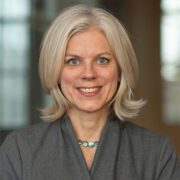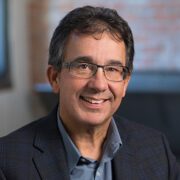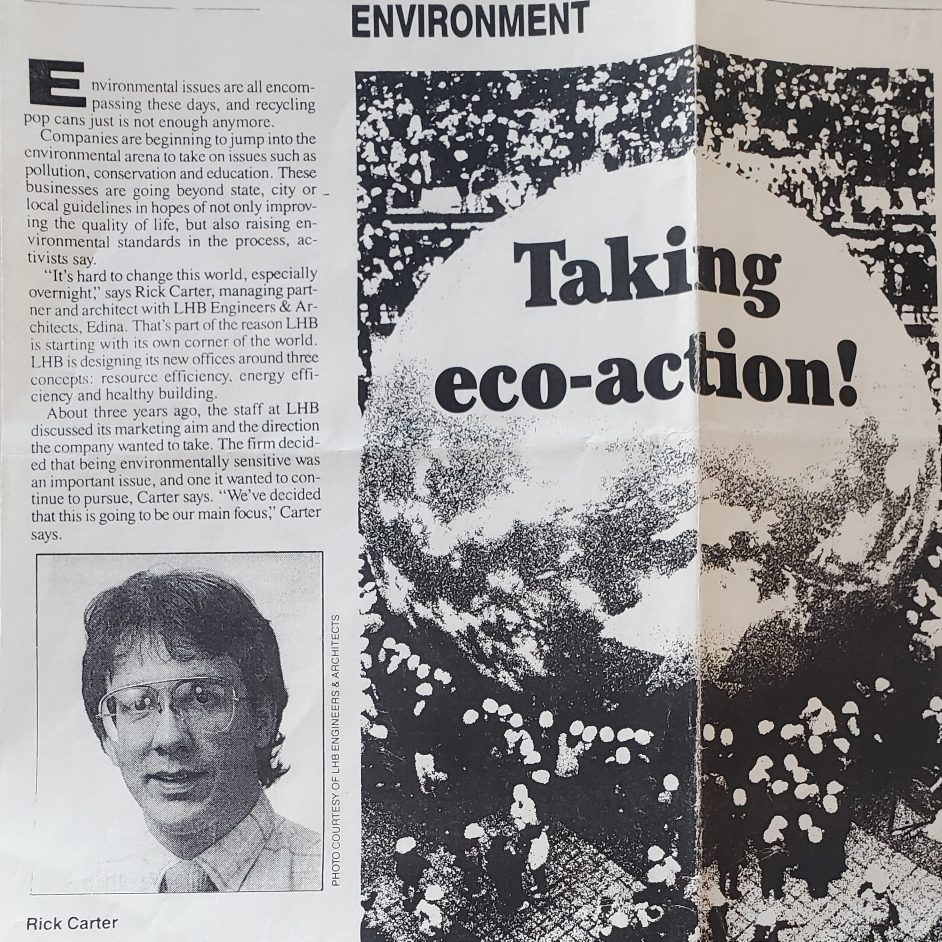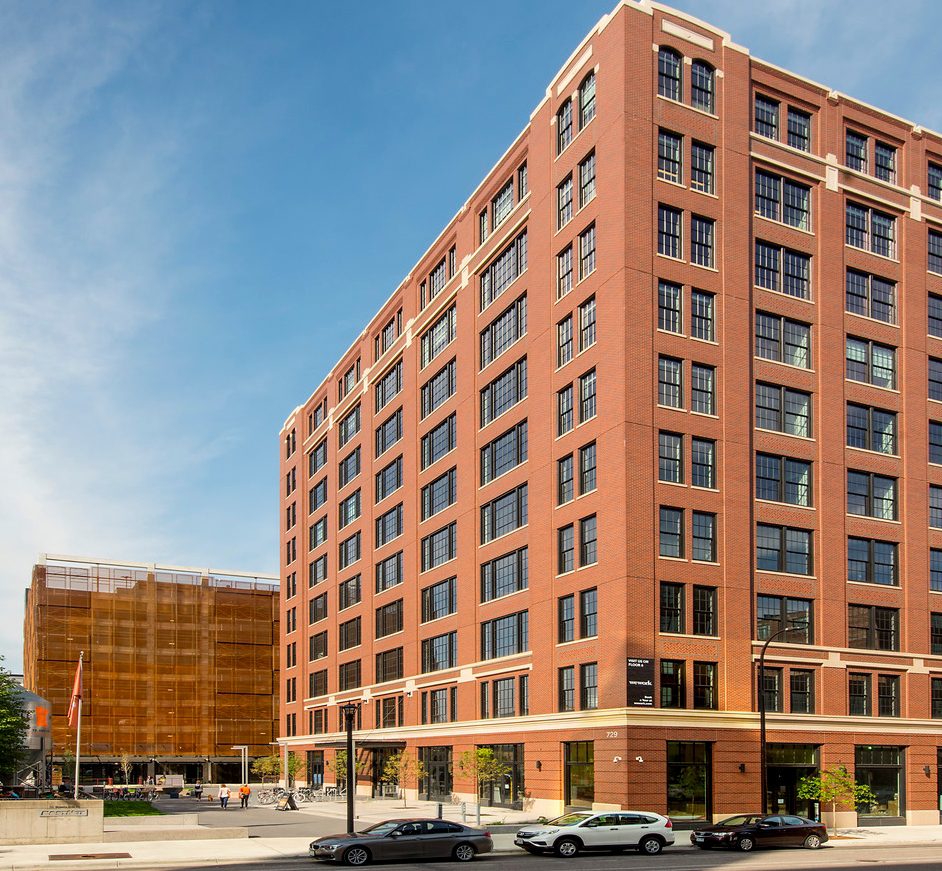
Imagine a world where every child feels connected to nature wherever she or he goes. Where buildings produce more resources than they use and their sites support surrounding ecosystems. Where human and ecological wellness is considered in every design decision. Where diverse perspectives are invited and included.
LHB’s Integrative Design Team (IDT) imagined this world when we created our Vision statement. IDT includes engineers, architects, landscape architects, planners, and interior designers, so the group of people who created our Vision represents all of these disciplines. LHB has long held the reputation of sustainable design leadership. Our Vision is intended to help guide our team’s strategic direction as we strive to go beyond sustainability, to give back to our community today and in the years to come.
We live our passion to create regenerative communities.
The first of the three statements in our Vision describes the outcome we hope for through our body of design work, the way we operate our offices, and how we take personal action. “Regenerative” may describe a process, project, or community and is characterized by the ability to “not only sustain all of [its] own needs […], but also contribute to the health of the environment around [it].”[1] Read more about the distinction between living, regenerative, restorative, and adaptive buildings and design processes here.

To this end, our goals are to move our portfolio of projects beyond “sustainable” toward “regenerative” and for IDT to exemplify a regenerative community. The first steps toward this ideal are underway now and include developing our Thrive framework to track the level of sustainability on our projects in the categories of climate, wellness, water, resources, ecology, prosperity, and community. This year we will also be establishing a shared understanding of what “regenerative community” means for IDT.
Using our research-based approach, we design holistic systems to enhance human and ecological wellness.
We have established one primary goal in support of designing for human and ecological wellness: “our work is grounded in applied research.” Currently, we are defining “applied research” as a broad concept that may include research, evidence-based design, and simulation used to inform our design process. For several reasons, design practice often does not include a focus on research. IDT is changing our model based on the belief that a more informed design process and feedback loop will result in spaces that enhance human and ecological wellness. LHB’s Research Studio is currently working to identify best practices for using these various methods. This work will lead to the sharing of recommendations for how to consistently integrate applied research into IDT’s practice. Another significant initiative toward this goal is the tracking and reporting of performance metrics on all of our design projects in support of our signing onto the AIA 2030 Commitment.
Our supportive studio-based culture fosters curiosity and embraces diversity to build lasting relationships.
IDT is now organized into “Studios” around market sectors or disciplines with the goal of modeling supportive workplace practices. Many actions are in progress toward increasing employee retention, engagement, and inclusion. Offering training opportunities is an important way we support our staff around the goal “our team embraces learning to foster curiosity and growth.” LHB recently launched a mentorship program to provide a framework for employees to connect and learn from each other. In its inaugural year, over half of IDT members are participating. Another significant initiative in 2018 is to increase our participation in diversity, equity, and inclusion initiatives in conjunction with LHB’s 2018 Strategic Plan “Gold Medal Initiative” on that topic.
To ensure the success of the IDT Vision, we conclude our goal plan with several actions around communicating our values and unique approach within our community. We broadly define our community as current and potential IDT members, all LHB employees, existing and future clients, and peers in our design disciplines. As we move forward with implementing this Vision, look for updates here and across a variety of platforms. Sharing knowledge is important to our collective success!

[1] Nugent, S., Packard, A., Brabon, E., Vierra, S. (August 5, 2016). Living, Regenerative, and Adaptive Buildings. Retrieved from www.wbdg.org/resources/living-regenerative-and-adaptive-buildings.



